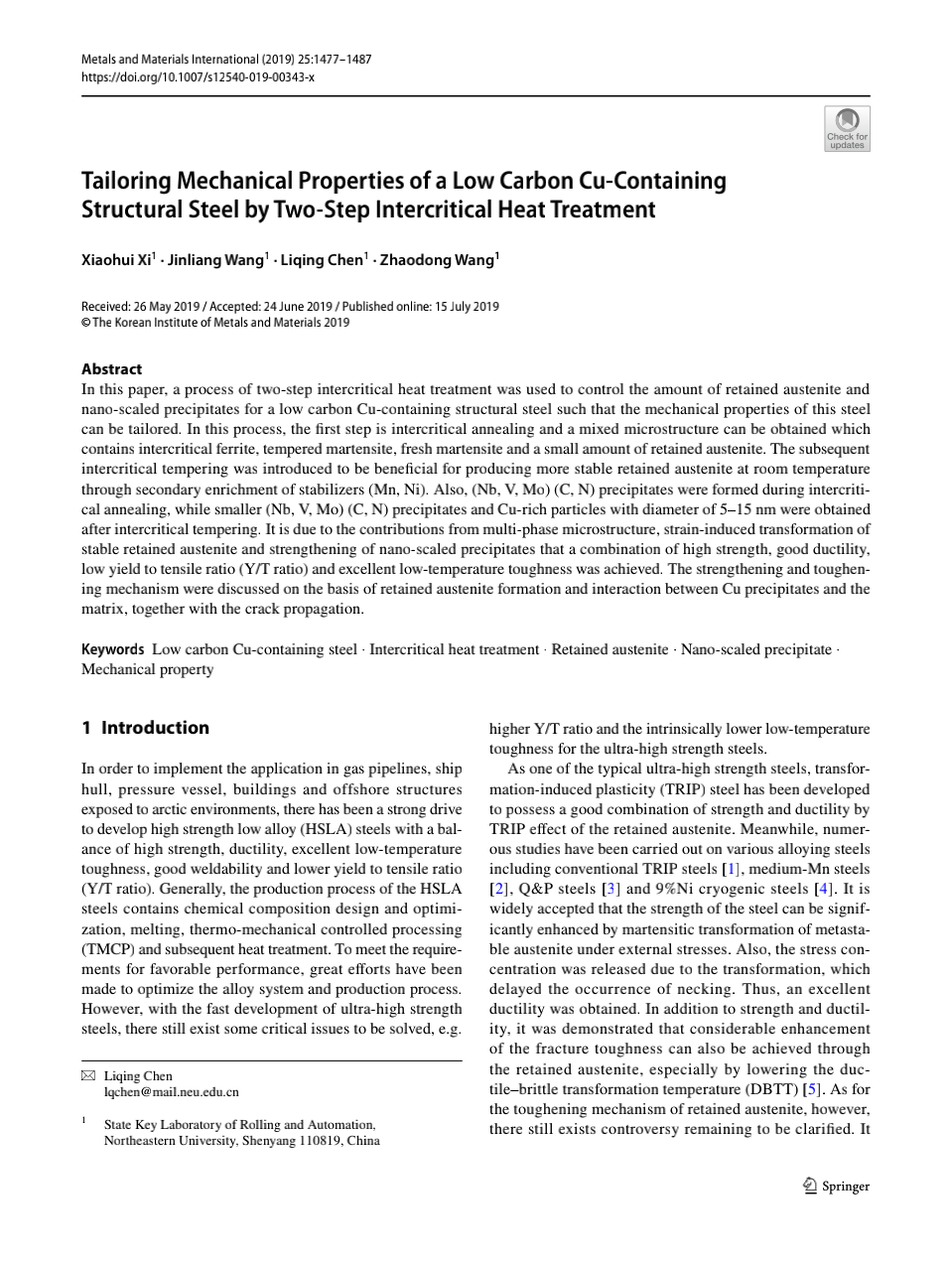In this paper, a process of two-step intercritical heat treatment was used to control the amount of retained austenite and nano-scaled precipitates for a low carbon Cu-containing structural steel such that the mechanical properties of this steel can be tailored. In this process, the first step is intercritical annealing and a mixed microstructure can be obtained which contains intercritical ferrite, tempered martensite, fresh martensite and a small amount of retained austenite. The subsequent intercritical tempering was introduced to be beneficial for producing more stable retained austenite at room temperature through secondary enrichment of stabilizers (Mn, Ni). Also, (Nb, V, Mo) (C, N) precipitates were formed during intercritical annealing, while smaller (Nb, V, Mo) (C, N) precipitates and Cu-rich particles with diameter of 5–15 nm were obtained after intercritical tempering. It is due to the contributions from multi-phase microstructure, strain-induced transformation of stable retained austenite and strengthening of nano-scaled precipitates that a combination of high strength, good ductility, low yield to tensile ratio (Y/T ratio) and excellent low-temperature toughness was achieved. The strengthening and toughening mechanism were discussed on the basis of retained austenite formation and interaction between Cu precipitates and the matrix, together with the crack propagation.
